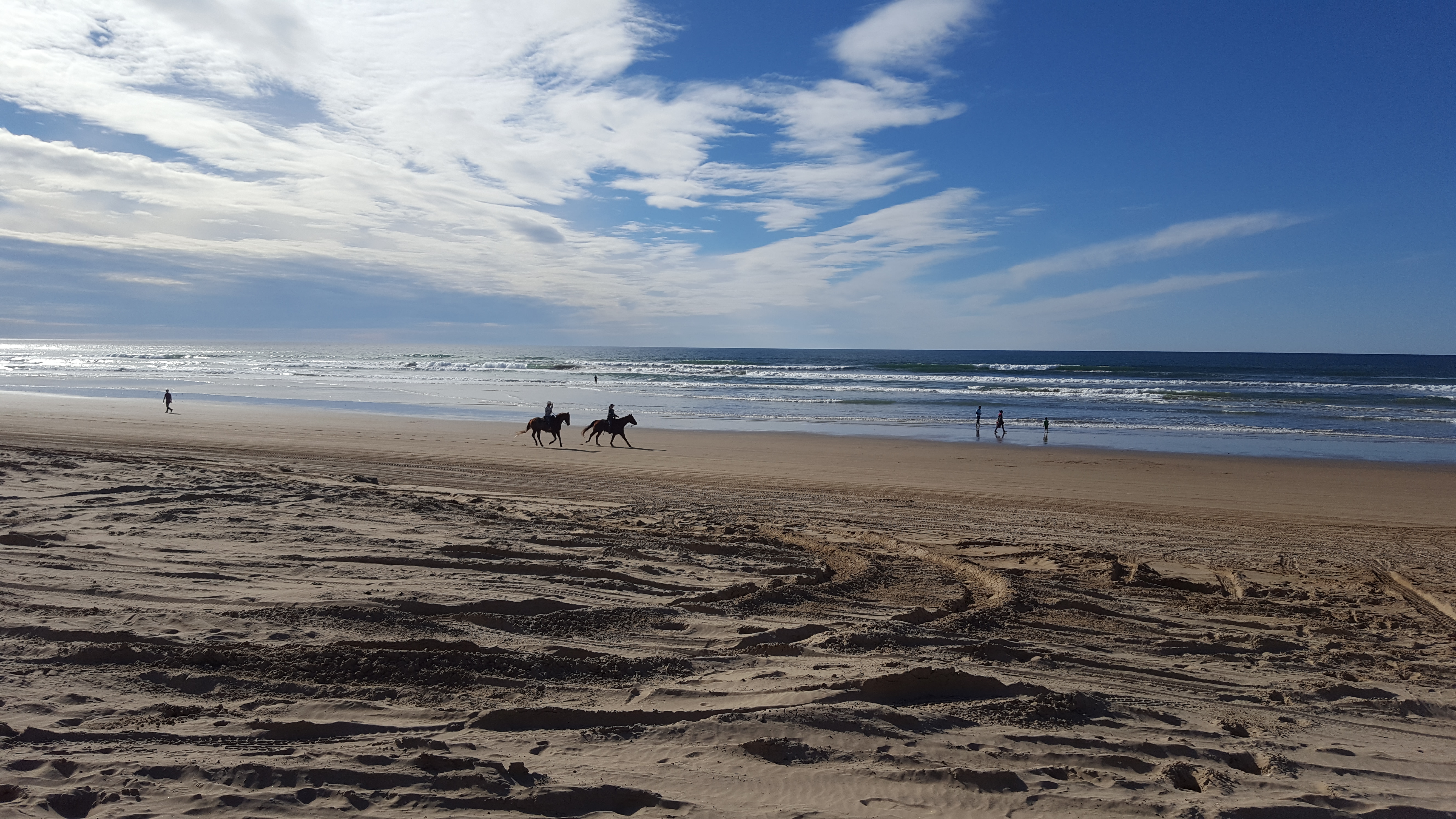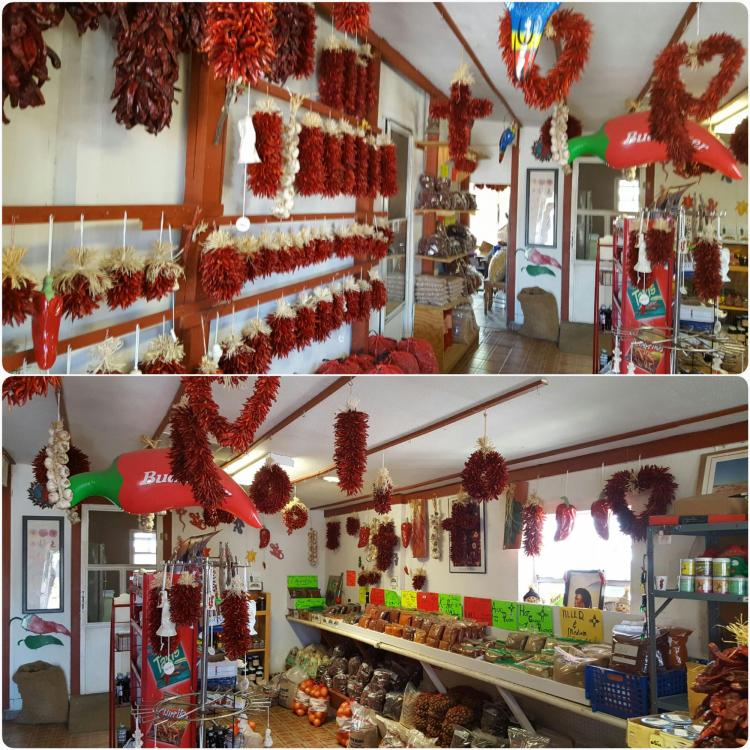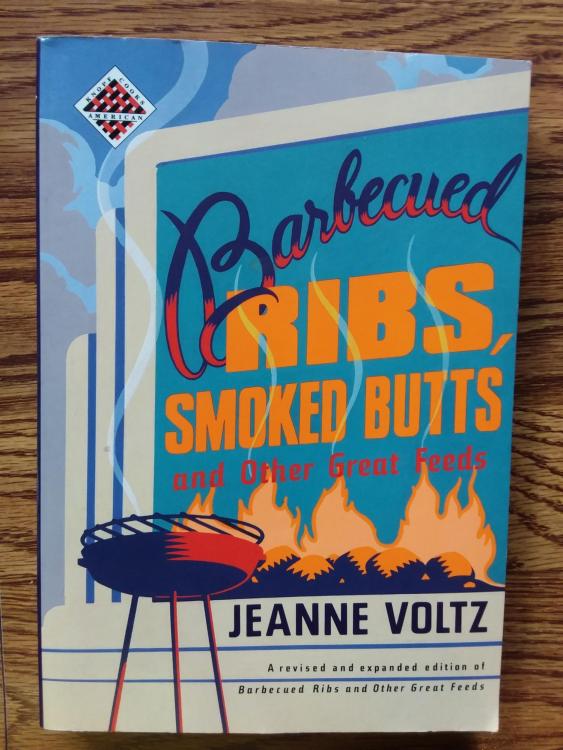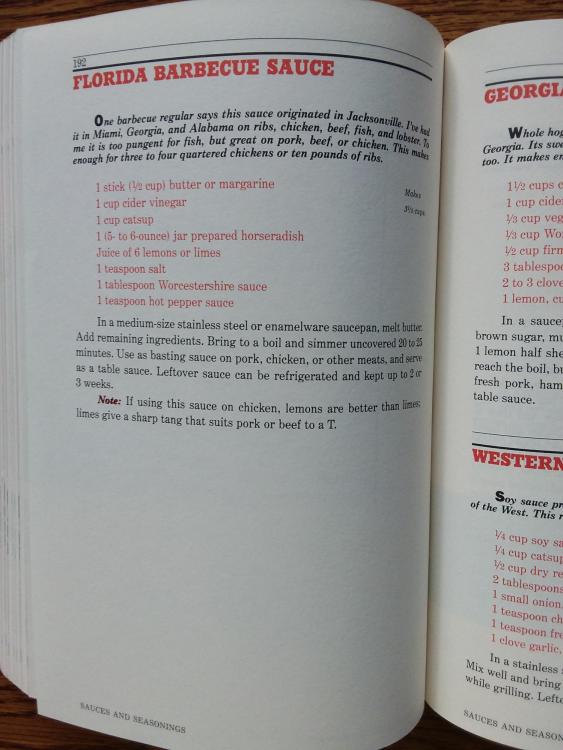-
Posts
13,761 -
Joined
-
Last visited
Content Type
Profiles
Forums
Store
Help Articles
Everything posted by Smithy
-
That looks like a delightful end to an excellent trip, even if you had to go to a mall to do so. (I found the mall's "Joy of Shopping" sign quite amusing.) Thank you for a lovely and inspiring virtual tour!
-
Yes, that's right. If you click on a link with an Amazon/eGullet format, then the system will track any purchase you make on that trip to their site, and benefit eGullet - even if you buy something other than the linked object. For instance, if you click on a link for a cookbook recommended on one of the innumerable such topics, then end up buying a skillet, eGullet will get a small commission. The formatting is right, so it should still work. (No, I'm not a manager, but I've spent a lot of time looking at this stuff lately.) For information on how to generate an Amazon link like that in a new post, please see this Help article.
-
I was able to find a block of American Cheese instead of Velveeta, but I admit that I'm not sure there's much difference. I wish I'd thought of sriracha last night when I was looking for the Tabasco. Well, this was a first try at the recipe, and I wanted to be as true to it as possible. That's my story, and I'm sticking to it.
-
Well, I've taken my first step (as an adult) into pimento cheese. My mother, a Floridian, loved pimento cheese: store-bought, out of the jar. We had a lot of small juice jars from those purchases, growing up. I loathed the stuff. This topic, and a few glancing blows in other topics, have made me think I should try a different version. The occasion is an imminent trip to Missouri to see (we hope) the Total Solar Eclipse; I've been asked to bring a selection of vegetables and dips. @kayb's recipe looked good. This advice looked stellar: Alas, the picture I took before I put it in the refrigerator to mellow is indistinguishable from, oh, rice and ham and cheese, with or without saffron. I'll post something later, if I come up with a better photo. My first and second impressions are that it's very good - not at all like that nasty stuff my mother liked so well. I might could have added more Lawry's salt and heat, but I was afraid to overpower it for other tastebuds and it may change as it settles in. (In addition - I couldn't find the cayenne, couldn't find Tabasco. Settled for white pepper and touches of Aleppo pepper and chipotle. What the heck, I'm mostly a Yankee.) Another discrepancy is that I used 2 4-oz jars of pimentos, twice the amount recommended here. Based on my rereading of this topic, that won't get me kicked out of the pimento club. My third impression will have to wait until it's had time to mellow. Right now, I'm very pleased with the result. Thank you, kayb!
-
...and if I read it in bed, as I was wont to do with the Kindle, I'll get credit for weight-lifting, too!
-
Yep. I caved too. Put a hold on it at our library, realized it would be 2 weeks, went to Barnes & Noble and plunked down the cash. I've been reading it on Kindle and agree that it's a great read; soon I'll be cooking from it.
-
For years, I had a 2-pan set of enameled steel(?) pans much like that. They weren't cast iron, but they were enameled metal of some sort. They were intended for toaster-oven cooking. I lost track of the 1- and 2-person casseroles (excuse me, hot dishes) I cooked in those pans, in my toaster oven. I think this looks like a CSO candidate.
-
She popped up here last fall, but hasn't re-materialized as promised. We now return to the topic....
-

Looking for red ginger threads in syrup (Meechun Canning Company)
Smithy replied to a topic in China: Cooking & Baking
Welcome back, sir - and thanks for sharing your find! -
I second the recommendation for white whole wheat flour. King Arthur White Whole Wheat Flour is becoming more readily available in the stores I frequent, but I think I've also see it from Bob's Red Mill. I agree with lindag that it has a milder flavor.
-
I grew up out in the country, where ice cream trucks never ventured. During summer weeks when I visited my grandparents in Fresno, the ice cream truck with its cheerful music-box tune was a siren call. Sometimes - not every day! - we'd get to indulge. Yes, that's a fine memory.
-
Was the sous vide treatment too brief to pasteurize the duck breasts?
-
Hmm, it might fit in our Princess-mobile.
-
Why must the seeds be removed? Heat control, appearance, texture, something else? I ask because I'm dealing with a ristra of dried chilis from New Mexico, one at a time. I'm not very careful about seed removal and haven't noticed any problems, but they're a different type of chili than yours. Incidentally, your finished dish looks well worth eating.
-
@rotuts, those knives are gorgeous, and I wish you many years of enjoyment! I have a question, however. Above, you indicate that the handles are horn. They look like wood in the photos. Is that fine, tight grain an artifact of the photos, or did your eccentric keypad mistype the word? I didn't know horn could look like that.
-
Let us know what you find out, please.
-
My copy arrived today, sort of. By "sort of" I mean I got a revised and updated version: Unfortunately, among the revisions she dropped the Cornell Barbecue Sauce. I know I can get that recipe elsewhere; I have it bookmarked and can print it and add it to this book. Nonetheless I'm disappointed that the revisions involved removing at least one recipe. Another interesting point is that the revisions involve changed proportions, at least in one case. Compare the recipe in rotuts' book for Florida Barbecue Sauce, above, to that of my book, below: All that said, it looks as though it will be an entertaining and informative book. Thanks for the recommendation, rotuts.
-
Add me to the list of admirers. The photography is lovely, and you're showing me a place I've never been, from the viewpoint of someone who can compare what it was to what it is now. The food looks glorious, and like kayb, I WANT those prawns, now! The crabs with the coriander provide a beautiful color contrast. I keep trying to sneak what we call cilantro into my family meals; sometimes my DH approves; this scattering of the stuff over a finished dish might be another thing he'd like. The prawns and fish both look like they have a crisp crust; the prawns look almost like tempura. Can you describe in more detail how they are cooked? Is there a batter? Would it have the same spices you've named above? Would it have a starch of some sort? I predict messy kitchen experiments in my future....
-

Hello everyone! Where is the modern cuisines forum
Smithy replied to a topic in Welcome Our New Members!
Welcome, Manav. It's clear you're interested in Modernist cuisine; are you just getting into it, or have you been working at it for a while? We don't have a dedicated Modernist forum. Equipment is discussed in the Kitchen Consumer forum; specific cookery is discussed in the Cooking forum, or the Pasty & Baking forum. Tags can help in the Search function; there is a tag for "Modernist Cuisine Forums" (for those topics that were migrated from those forums to ours) as well as for the more current "Modernist" topics that originated here. The Cooking forum has an index titled Modernist Discussions at the eGullet Forums that should help get you started. In addition, if you open one topic you'll often find "similar" topics at the bottom of the page; as long as they're tagged with the "Modernist" tag you should be able to find them. We have a great deal of active discussion about Sous Vide, and there are folks around here who are playing with gels and fantasizing about centrifuges and distillation. -
Here is one link to a red relish discussion, with a recipe link by FauxPas. It may not be the discussion Kerry is thinking of, but she's probably busy packing.
-
Thank you very much for this virtual tour, @Duvel. It's been grand.
-
I too would like more information, as you find time to post it. Tell me more about the combination of curried prawns (or chicken) and rice, please. It may just be the photos, but I don't see sauce with the prawns (or chicken) that could be added to the rice. Is there extra sauce, or is the rice relatively dry in this combination? Was that the purpose of the yoghurt in your tiffin? I love rice but am inclined to include sauces with it. It may be because my mother, a U.S. Southerner, considered "rice'n'gravy" to be a single word.
-
That is a very good question. What do people do about lifting those springform pans when they're hot? @ElsieD, thank you for that recipe. I now have a plan for one dinner, when our family wood-splitting party comes up in a couple of months.
-
I'm slightly farther along than you, but not much. I have learned that if I subscribe to a particular YouTube series I'll get a notification every time a new video comes out. The notification comes by email and as a notification to my Android devices. The notification methods can be adjusted, just as they can be adjusted for eGullet. AFAIK the business of "following" someone benefits that person, but not you. The more followers someone has, the better their cachet. @gfron1 referred to this when he was looking to get his book published. He, @Franci and any number of other star members can asked more light on this aspect if they wish.







